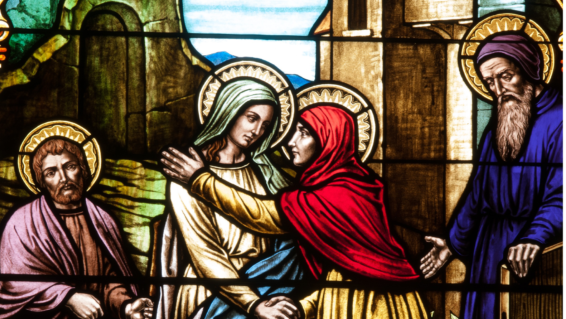Up to this point, I’ve given you an introduction to creation theology and a review of Young Earth Creationism. Today, let’s discuss Old Earth Creationism. And as we continue, I implore you to remember that creation theology is a secondary issue within Christianity — meaning faithful believers can and will have differing opinions on the subject.
Old Earth Creationism tends to appreciate the insights gained from scientific inquiry regarding the age of the Earth, our solar system and the universe as we have come to know it. OEC theorists typically welcome the insights of science, up to a point, and allow the findings to shape their understanding of how God made the universe.
Geology (ice cores, continental drift, sediment layers), astronomy (speed of light, expansion of astronomical distances), paleontology (fossil layers) and radiometric dating (analyzing the decay of radioactive isotopes like carbon-14 to nitrogen-14) suggest the Earth could be up to 4.5 billion years old, and the universe is some 14 billion years old. Therefore, OECs typically hold to some form of progressive creationism – that God created the universe through processes involving direct, divine intervention to accomplish the diversity and complexity we observe in the universe. Therefore, they often try to reconcile their understanding of the Genesis 1 account with these insights.
Following the initial work of Geologist Arnold Guyot, some OEC proponents like astronomer Hugh Ross hold to a “day-age” theory where each of the six days corresponds to a creative epoch in which God intervened to carry forward the formation of the physical universe and produce complex biological life. Others posit a “gap” of time (and quite a large one at that) between the events of Genesis 1:1 (which they say speaks of God creating the matter, energy and natural laws governing the universe) and 1:2a, when God begins to specifically intervene in the formation of life on Earth. Some “gap theory” adherents still embrace the view that the rest of Genesis 1 took place within six 24-hour days. While initially popularized in the 1800s by Thomas Chalmers, nineteenth century writer G.H. Pember significantly advanced the view, until it was adopted by the Scofield Bible in 1907.
Spiritual and transcendent truths
Other OEC viewpoints, like Robert Newton in, “Three Views on Creation and Evolution,” see Genesis 1 as a detailed portrayal of how the process of creation might appear to someone standing on the surface of the Earth witnessing the formation of an atmosphere, the rise of vegetation, the settling of water vapor and clearing of the skies, and the flourishing of animal life. Still others view the days as literary devices, relying heavily on the detail that the seventh day does not end. These proponents tend to focus more on the spiritual and transcendent truths the text is trying to communicate, allowing significant room within the text for science to speak to God’s creative mechanisms.
Old Earth Creationists typically accept animal and plant death prior to Genesis 3’s “fall,” but may not allow for human (and certainly not spiritual) death until Adam and Eve fail the test in the Garden. Unlike adherents of Theistic Evolution, OECs do not think the processes of mutation, adaptation and natural selection themselves, even guided by providential oversight, can account for the diversity and complexity of life on Earth or for the emergence of human consciousness and reason.
Therefore, they typically maintain that creation required some supranatural or supernatural divine intervention to bring about the level of biological complexity we see in organic life. And many would be willing to acknowledge that the steps God took were dramatic, discrete and, for lack of a better term, miraculous.
In truth, these views avoid many of the challenges raised against YEC. In Old Earth Creationism there is ample room for the biblical narrative, and many scientific conclusions, to coexist. Many, if not most, OEC views can find common ground with the growing consensus of scientific insight on the origin of the universe.
Acting providentially
Old Earth proponents are quick to point out how many scientific models have room for God to act providentially to guide the creative process through laws and mechanisms He designed, and many point to missing steps in what science can explain as possible evidence for God’s direct intervention in the development of the universe.
Additional movements like the “Fine-Tuning Argument” and “Intelligent Design” even use these insights as evidence for God’s creative activity in the world. Many Christian philosophers, apologists and evangelists see these as open doors to begin to share the truth about God through the way His wisdom is revealed in the world.
Old Earth perspectives also avoid the more tenuous ground of YEC’s apparent maturity of the universe.
Michael Strauss finds the history compelling, leading him to conclude that “the most straightforward reading of the history of the universe is that it has actually occurred.”
Christians argue that we have not just a spiritual faith, but a historical one. OEC’s acceptance of what seems to be the history of the universe avoids potential conflicts about what Christians mean by that.
Allusion to eternity
Finally, OEC tends to take into account literary details and devices YEC can take for granted. For instance, many OECs are quick to point out the seemingly unending seventh day of Genesis 2; the wide semantic range for the words “beginning,” “day,” “morning” and “evening;” the extended way some events are described (Gen. 2:4); and allusions to God’s eternity from the longevity of the Earth. OECs also tend to allow archaeology and anthropology to shed light on how the biblical authors were speaking out against pagan Creation myths, and by using similar images and themes, demonstrating the surpassing power and wisdom of the God of Abraham, Isaac and Jacob. More literal readings of Genesis 1-2 tend to overlook these insights by eschewing some of them for a more plain reading of the text.
Critics of OEC, particularly within the YEC camp, usually accuse proponents of beginning with science and trying to conform scripture to it. They question whether OEC is trying to accommodate scripture to the world, when our duty as Christians should be to redeem the world with God’s Truth (which, they would argue, is based on a more literal meaning of scripture).
Many Christians are skeptical of “Big Bang” cosmology, and others are leery of placing too much confidence in scientific endeavors not focused on describing repeatably observable events. Given modern academia’s cynicism for religion in general, and Christianity in particular, it is not difficult to understand why that might make some Christians uncomfortable.
Additionally, some OEC theories may not be as internally consistent as proponents think. Some criticize YECs for reading the Bible like a textbook; however, models like Robert Newton’s (described above) seem to do the same thing, based on their understanding of what science suggests might have happened.
On the other hand, some Theistic Evolution proponents are disappointed in OEC’s reluctance to accept evolution as a sufficient mechanism for God’s creation of plant, animal and human life. They point to the growing amount of research that seems to confirm evolutionary theory, as well as a reliable fossil record that fits some order suggested by evolutionary theory.
‘God of the gaps’
Other challenges focus on the implications of the OEC viewpoint – some critics wonder whether OEC might fall into a “God of the gaps” approach to divine activity, ascribing cause to natural mechanisms as they are discovered and using God simply as a patch for what cannot be explained. They advise caution against any theory that might, explicitly or implicitly, relativize God’s activity to the margins. Old Earth Creationism also raises significant interpretive questions. As mentioned before, Young Earth models typically read Genesis 1-11 in a way that includes both a catastrophic, global flood and an unbroken, chronological genealogy from Adam to Abraham. YEC adherents typically question how these descriptions fit into an OEC framework.
Given the diversity of OEC perspectives, there are many responses; but many OEC theorists suggest the genealogy could be representative and stylistic more than literal (as in Matthew 1), and that words used to describe number and geography have a wide range of meaning (i.e., “earth” could mean the globe or refer to the dry land within the region).
Furthermore, most OEC theories have to make room for plant and animal death before the fall in Genesis 3. On the basis of Genesis 9:4 and Leviticus 17:11, it could be argued that plants, while biologically active, are not considered “alive” in the biblical sense. But that does not account for the possibility of animal death if there is a large amount of time between the creation of animals and the fall.
All-in-all, Old Earth Creationism tends to find some middle ground in the perceived battle between Young Earth Creationism and Darwinian Evolution, and secures it in a way that allows the Bible and scientific findings to shed light on what is true about God and His world. However, in finding that place, it opens itself up to criticisms of compromise and has a large diversity of theories that try to account for the way the Bible describes the act of creation.
Next up for review: Theistic Evolution.






